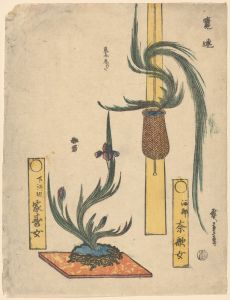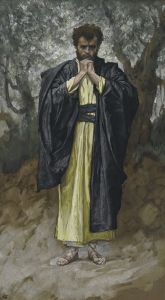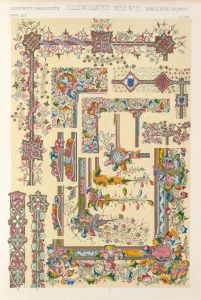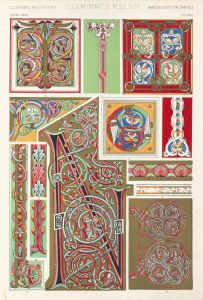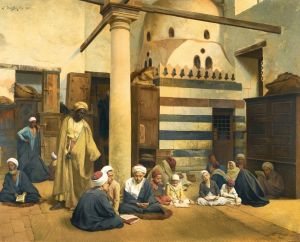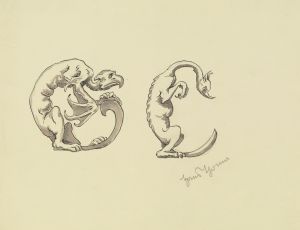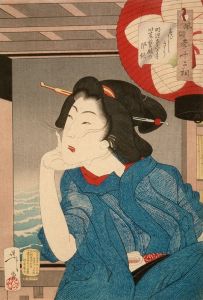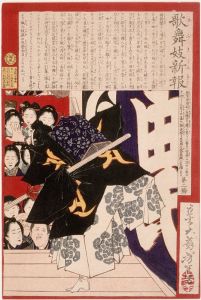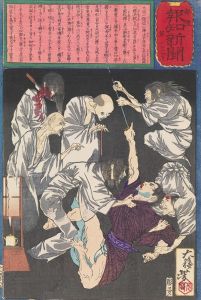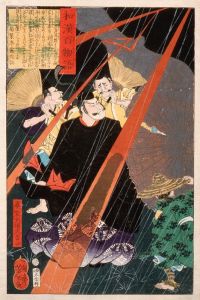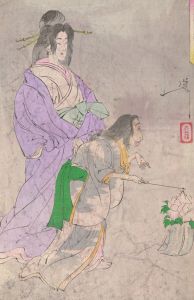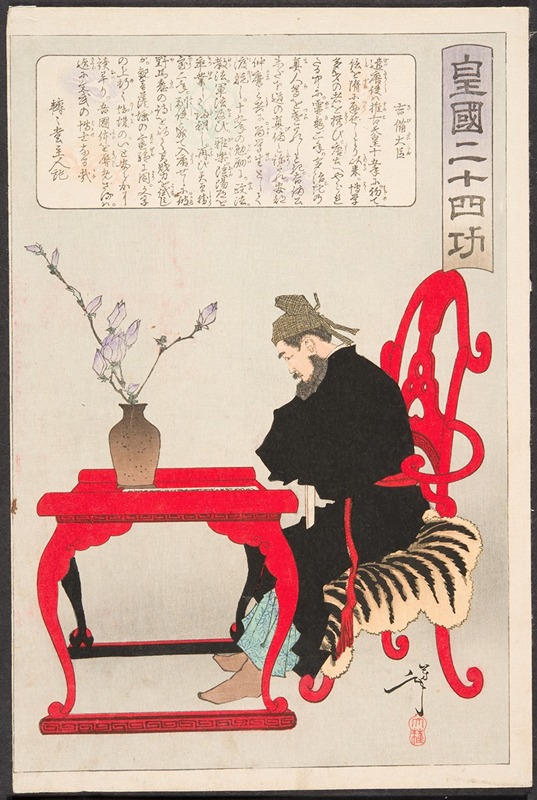
Kibi Daijin Seated at a Chinese Table
A hand-painted replica of Tsukioka Yoshitoshi’s masterpiece Kibi Daijin Seated at a Chinese Table, meticulously crafted by professional artists to capture the true essence of the original. Each piece is created with museum-quality canvas and rare mineral pigments, carefully painted by experienced artists with delicate brushstrokes and rich, layered colors to perfectly recreate the texture of the original artwork. Unlike machine-printed reproductions, this hand-painted version brings the painting to life, infused with the artist’s emotions and skill in every stroke. Whether for personal collection or home decoration, it instantly elevates the artistic atmosphere of any space.
"Kibi Daijin Seated at a Chinese Table" is a woodblock print created by the renowned Japanese artist Tsukioka Yoshitoshi. This artwork is part of Yoshitoshi's series "100 Aspects of the Moon" (Tsuki hyakushi), which was published between 1885 and 1892. The series is celebrated for its exploration of Japanese folklore, history, and literature, all unified by the common theme of the moon.
Tsukioka Yoshitoshi (1839–1892) was a prominent figure in the ukiyo-e tradition, a genre of Japanese woodblock prints and paintings that flourished from the 17th through the 19th centuries. Yoshitoshi is often credited with revitalizing the ukiyo-e art form during a period when it was in decline, due to the rapid modernization and Westernization of Japan during the Meiji era.
The print "Kibi Daijin Seated at a Chinese Table" depicts Kibi no Makibi, a historical figure from the Nara period of Japan (710–794). Kibi no Makibi (693–775) was a scholar and a statesman who is known for his diplomatic missions to Tang China. During his time in China, he studied various aspects of Chinese culture, including Confucianism, Buddhism, and the Chinese administrative system. Upon his return to Japan, Kibi no Makibi played a significant role in the cultural and political developments of his time, contributing to the introduction and adaptation of Chinese practices in Japan.
In Yoshitoshi's print, Kibi Daijin is portrayed seated at a Chinese table, which symbolizes his connection to Chinese culture and his scholarly pursuits. The setting and attire in the artwork reflect the influence of Chinese aesthetics, which were highly regarded in Japan during the Nara period. The moon, a recurring motif in the series, is often associated with contemplation, enlightenment, and the passage of time, adding a layer of depth to the portrayal of Kibi no Makibi.
Yoshitoshi's "100 Aspects of the Moon" series is notable for its innovative use of color, composition, and narrative. Each print in the series tells a story or captures a moment that is enhanced by the presence of the moon, serving as a metaphor for various human experiences and emotions. Yoshitoshi's work is characterized by its dynamic lines, vivid colors, and the ability to convey complex themes through visual storytelling.
"Kibi Daijin Seated at a Chinese Table" exemplifies Yoshitoshi's mastery of the woodblock print medium and his ability to blend historical and cultural elements into a cohesive and visually striking composition. The print not only highlights the historical significance of Kibi no Makibi but also reflects the broader cultural exchanges between Japan and China during the Nara period.
Yoshitoshi's contributions to the ukiyo-e tradition and his influence on subsequent generations of artists have cemented his legacy as one of the last great masters of this art form. His work continues to be studied and appreciated for its artistic and historical value, offering insights into the cultural dynamics of Japan during a time of significant change.





